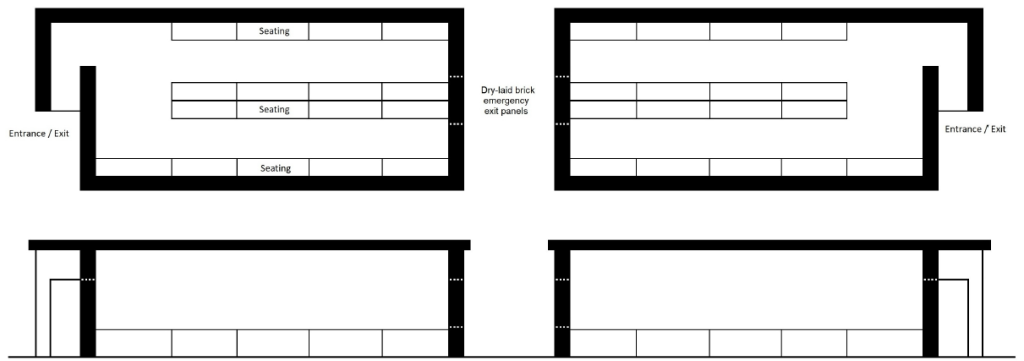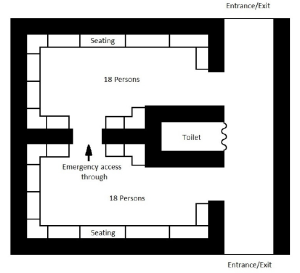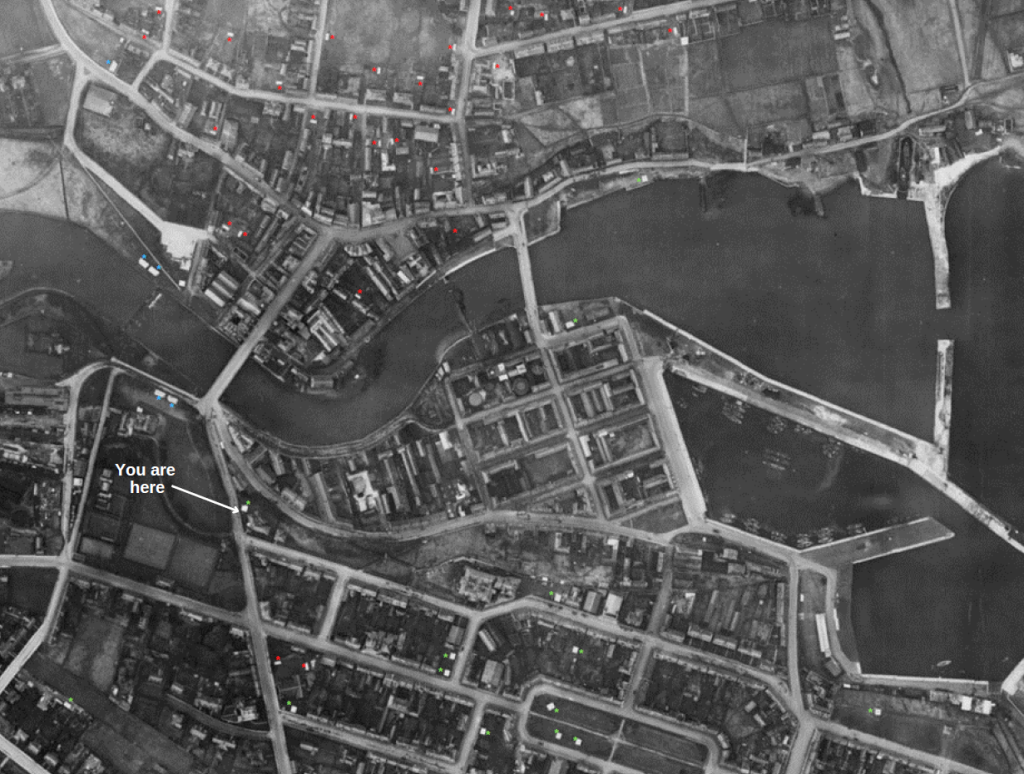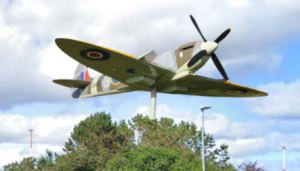Site 7. Surface Air Raid Shelter
Wick was well provided with protection against air attack. The Air Raid Precautions Act of 1938 gave local authorities responsibility preparing ARP schemes, including the provision and construction of public air raid shelters. These were intended to provide shelter for people caught out in the street when an air raid warning was sounded. However, it was not until early 1940 that councils started to look seriously at providing shelters. At this time preparations were started to build several of them in the town.
They were usually situated on areas of open ground such as parks and playing fields. They were long, low brick buildings measuring 32 feet by 16 feet (10m x 5m) with flat concrete slab roofs. While Intended to protect the occupants from blast effect, bomb splinters and debris, they could not survive a direct hit. The interiors were fitted with benches along the walls and down the centre of the building and were able to hold up to 50 people. There were no toilet facilities and although they were intended to have electric lighting this was never fitted in Wick’s case. At this time shelters were expected only to be used during the daytime. The night-long bombing raids carried out during the Blitz from late 1940, were not anticipated.

Work began in the spring of 1940 with the construction of seven large surface shelters with two in Bignold Park, two in the grounds of Rosebank House (now Caithness General Hospital) and accessed from Station Road. Two more were at the bottom of Macleay Lane beside the river on what is now the town’s car park and one at the bottom of Kirk Hill opposite St Fergus Church. None of these shelters survive today but can be identified as blue stars on the main picture opposite.
In addition, the salt cellars under the properties along Harbour Terrace were also converted to shelters, with their wooden doors removed and entrances sandbagged for protection.
Because of the proximity of the large RAF airfield on the northern boundary of the town many private houses to the north of Wick were provided with small, brick-built shelters in their gardens. These were large enough to accommodate one or two families and were usually built across two adjoining gardens so both households could access them. These are identifed as red stars on the main picture opposite.

The corrugated iron ‘Anderson’ shelters were commonplace in many private gardens. Supply was means tested. They were free to families whose annual income was less than £250 a year. Everyone else had to buy them at £7 each which would be the equivalent figure of £470 in 2020. The summer of 1942 saw a second phase of shelter building with over a dozen put up in the south of the town between Francis Street and Breadalbane Terrace. These were located close to public buildings where people congregated like this surviving example beside the town’s public library. Others were near churches which were pressed into service as schoolrooms, as the schools were requisitioned by the military. These are Identified as green stars on the main picture below. This aerial photograph dates from February 1942.
The later sheters were built in two sizes. One at 16 by 19 feet (5 x 5¾m) which held 36 people, and a slightly larger on at 16 feet by 21½ feet (5 x 6½m) which held 48 people. Lessons had been learned from the earlier shelter designs and the interiors of these were partitioned into two rooms. These were accessed via a connecting corridor from the main entrances. There was also provision for a toilet in the corridor, although this was a basic chemical toilet as there was no mains water supply to the shelters.

Construction of these shelters was somewhat belated as they were built six months after the last air raid on the town which occurred on 16th January 1942. With the war in Europe ending on the 7th of May 1945, demolition of air raid shelters across Britain began. However Wick’s shelters survived until the 1950s.


